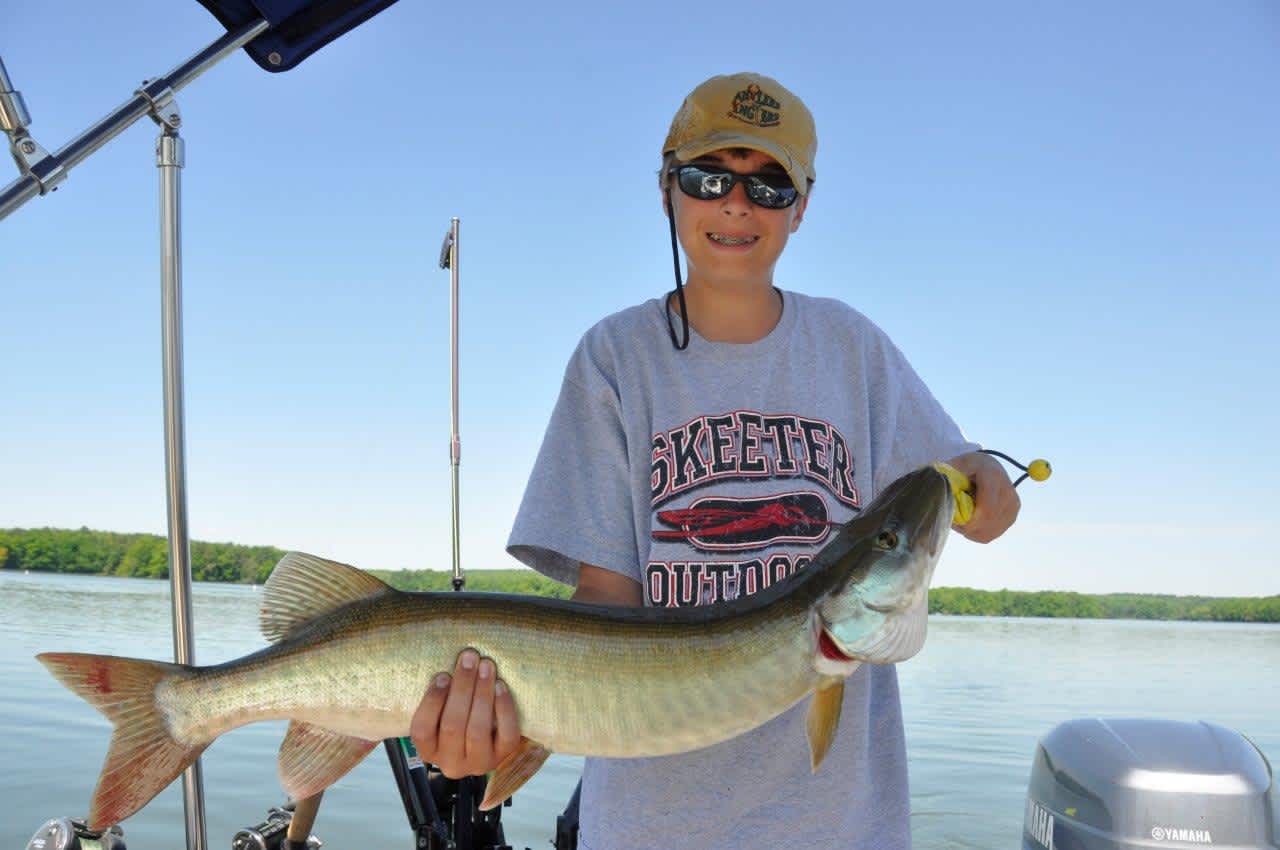Frugal Muskie Fishing
Dan Armitage 06.12.14

Paul Anderson is as resourceful as he is passionate about his favorite pastime: trolling for big muskellunge. I shared the boat with the Ohio Huskie Muskie Club president last week during the club’s annual outing when members offer to guide outdoor media professionals and the Ohio Division of Wildlife to promote the sport. Over the course of the day, I received instruction not only in muskie fishing but in finding ways to cut out-of-pocket-cost corners while pursuing what can be an expensive angling endeavor.

For example, Anderson eliminates the cost of installing a traditional planerboard mast and reel system aboard his boat by adapting his twin Fishlander electric downriggers into serving double-duty. Lifting and locking the downrigger shafts into the vertical position and replacing the downrigger cable with #250 Cortland planerboard line, he has portable masts extending five feet above each aft corner of his 20-foot Key West dual console—and powered planerboard reels when it comes time to bring in the double boards.
Instead of line releases designed for the task, which can get expensive to use and lose, Anderson finds that plastic shower curtain rings and common #16 rubber bands, which he buys by the pound at a local office supply, serve the same purpose at a huge discount. The flexing bands may even offer some action-enhancing advantages for the lures over the static commercial snaps.
For his spinning rods and reels, the frugal fisherman visits Walmart to buy pre-packaged 12-pound class combos that cost him “about 20 bucks” and last a season or two before the drags wear out and he tosses them in the trash. Anderson can spool 150 yards of PowerPro braided line onto the reels, likes the all-fiberglass rods for the flex they offer, and employs the inexpensive spinning rigs for flat-line and planerboard applications.
The muskie club president stores more than two dozen Plano tackle boxes in a common plastic storage tote secured and easily accessible in the passenger-seating area forward of the boat’s twin consoles, and uses a piece of coat hanger bent into an S shape to safely “fish” large, gang-hooked trolling baits out of vertical compartments of a traditional top-access Lakewood lure box placed aft of the helm seat.
Anderson secures his toothy catches for measuring, hook-removing, and quick picture-taking tasks not with the pricey Boga-style grips popular with his peers, but with cheap plastic jaw-gripper pliers that clamp into place and don’t allow the fish to spin. He says they allow the angler to maintain better control of the catch prior to its release.
Which is the fate of all the muskies that find their way into the cost-conscious fishermen’s Frabill “Big Kahuna” model net—one key item the angler says he never skimps on.

